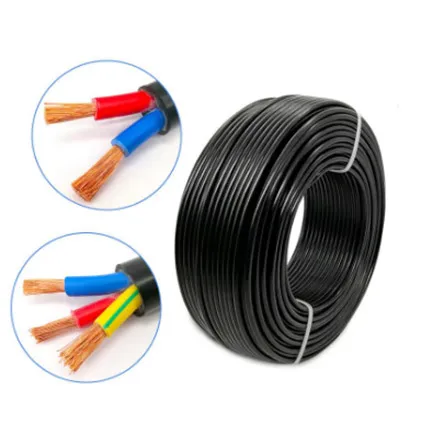
What you need to know about the manufacturing process of cables

Ever wonder how electricity magically flows through walls to power your devices? Or how massive factories stay operational 24/7? The secret lies in those unassuming wires hidden behind your walls. Cable manufacturing is a world where raw copper transforms into lifelines of modern civilization. I’ll walk you through this fascinating process step-by-step – no engineering degree required. You’ll see why quality matters and how innovation reshapes this industry.
The Wire Whisperers: How Raw Materials Become Conductors
Picture molten copper being pulled like taffy. That's the heart of cable production. Manufacturers start with copper rods heated to 1000°C, then forcibly stretch them through diamond dies. This "wire drawing" process is like metal gym training – each pull makes the wire thinner and stronger. What emerges is hair-thin filament ready to become part of larger power cables .
Fun fact: One kilogram of copper can stretch nearly 100 kilometers! But here’s where it gets clever. Single strands are fragile, so technicians twist them together like DNA helices. This "stranding" creates flexibility while maintaining conductivity. For industrial-grade control cables , precise tension is crucial – loose strands cause energy loss.
| Stage | Input | Output | Purpose |
|---|---|---|---|
| Wire Drawing | 8mm Copper Rods | 0.4mm Wires | Creates conductive core |
| Annealing | Hard-Drawn Wires | Softened Copper | Restores flexibility |
| Stranding | Multiple Wires | Unified Conductor | Prevents breakage |
The Invisible Shield: Insulation’s Life-Saving Magic
Bare wires would cause catastrophic short circuits. That’s where insulation becomes the unsung hero. Modern facilities use triple-layer extrusion:
- Inner Shield : Conductive layer equalizing voltage stress
- Insulation Core : XLPE (Cross-Linked Polyethylene) withstands extreme heat
- Outer Shield : Grounding layer preventing energy leakage
For specialized applications like underground transit lines or hospitals, manufacturers add chemical-resistant compounds. I’ve seen test labs where cables endure bone-chilling -70°C to blistering 220°C temperatures – extreme proofing for critical infrastructure.
Global Giants & Hidden Heroes: Manufacturing Geography Matters
While cables seem universal, their origins shape performance. Industrial powerhouses like China dominate volume production, with leading china cable manufacturer sites processing 50 tons of copper daily. But scale isn't everything. Premium European plants focus on customized solutions for electrical equipment in chemical plants where standard cables fail within months.
The competition drives innovation:
Self-Healing Tech
Microcapsules release insulating fluid when damaged
Smart Monitoring
Fiber optics embedded within cables report real-time degradation
Recyclable Compounds
Biodegradable insulation from soy byproducts
When Cables Meet Architecture: Silent Partners in Construction
Imagine skyscrapers as human bodies – cables are the nervous system. For commercial high-rises, fire-resistant cabling runs through dedicated shafts with flame-retardant coatings. Residential projects prioritize flexibility – contractors need cables that bend around tight corners during installations.
A project manager once showed me why specifications matter: Using generic wires instead of shielded cables caused elevator control systems to malfunction in a new hospital. Retrofitting cost 3x more than proper installation. That's why reputable contractors treat cables as critical residential and commercial building materials .
"We don't just bury cables in walls – we engineer pathways for electrons. A data center's cable layout reflects its operational philosophy." - Senior Engineer, Global Construction Firm
The Testing Gauntlet: Why Certification Saves Lives
Behind every cable drum is brutal validation. Samples undergo:
- Tensile torture: Stretched to breaking point
- Fire resistance: Burned alongside flammability benchmarks
- Water immersion: 30-day submersion while energized
Reputable manufacturers maintain ISO 9001 certifications, but specialists push further. I recall a marine cable factory where products endured salt spray chambers mimicking Atlantic storms. For nuclear facilities, cables pass radiation exposure tests equivalent to 50 years of decay.
The Bottom Line: More Than Meets the Eye
Cables represent a perfect marriage of materials science and practical engineering. What looks like simple rubber-coated wires actually involves nano-scale material innovation, precision robotics, and rigorous safety protocols. Whether it's delivering power to hospitals or enabling factory automation, quality cables remain civilization’s silent backbone.
Next time you flip a switch, remember the incredible journey behind that simple action – from molten copper to perfectly calibrated conductor, shielded by multiple layers of protection, manufactured through decades of perfected industrial craftsmanship.
Tags:
Recommend Products











